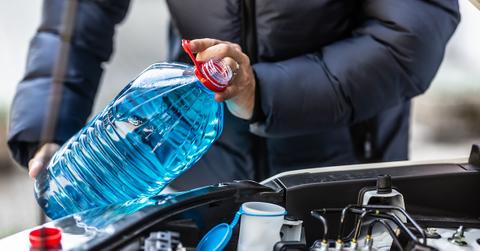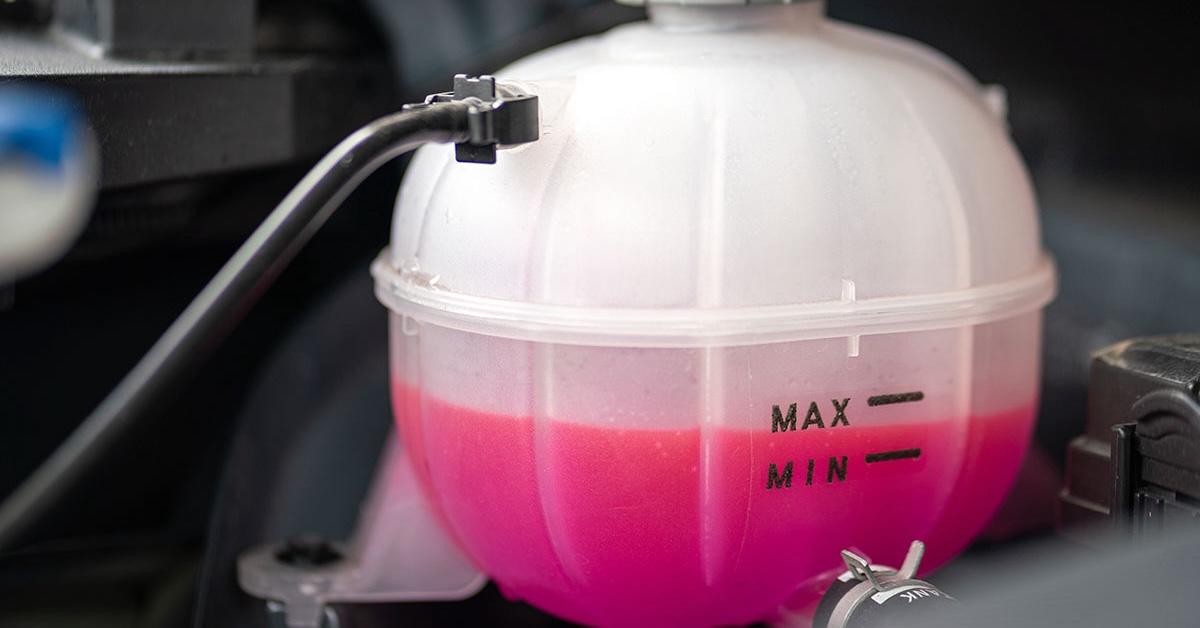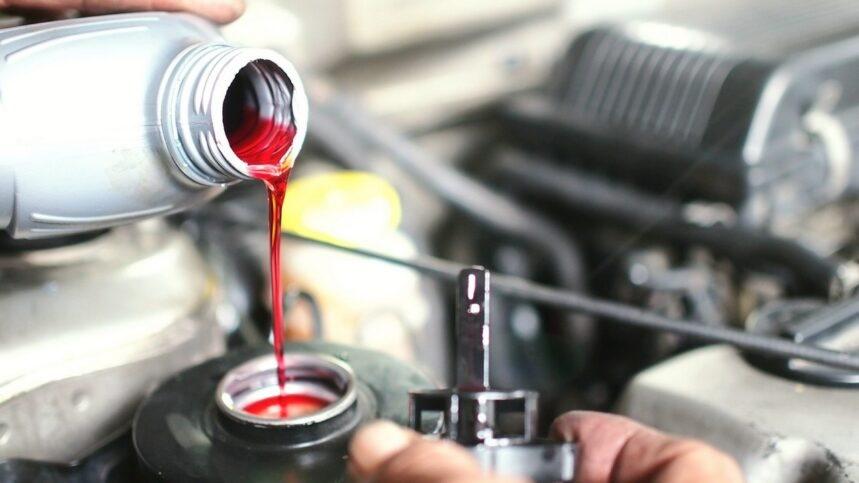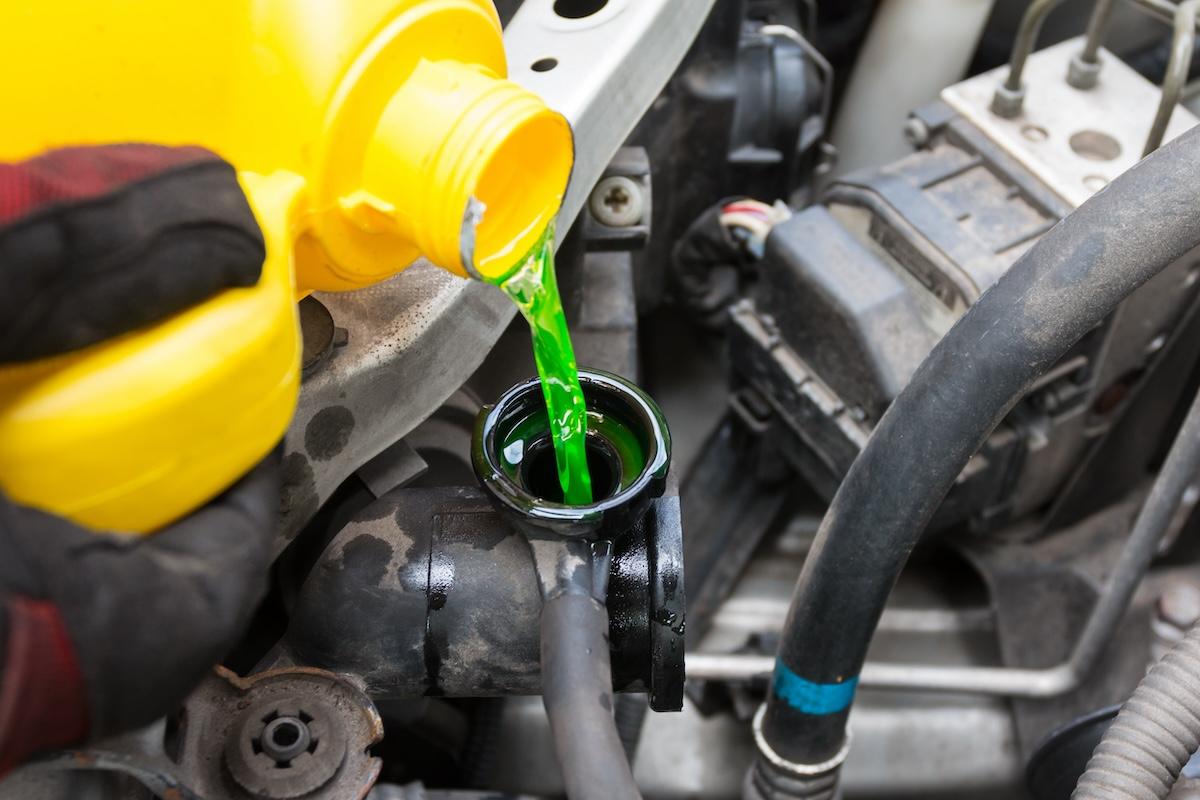Hue Knew? The History Behind Your Car's Antifreeze Color Palette
Published Nov. 28 2023, 12:57 p.m. ET

The Gist:
Antifreeze was initially dyed for leak identification, with original formulas in green or blue and later ones in orange or red.
Colors historically denoted distinct antifreeze formulas, reflecting changes in technology and additives, with modern hybrid versions coming in various colors.
Today's antifreeze isn't regulated by color; consult your car's user manual for the appropriate coolant type, as mixing can accelerate wear on the coolant system.
Colder weather is ahead, and while we may not be able to hibernate or fly south, we definitely have to prepare. One thing most of us use to get around is some sort of car or vehicle, which relies on antifreeze (also known as coolant) to make sure the engine doesn’t freeze or overheat. Antifreeze is an essential part of running a car, as it also lubricates other bits and bobs in the car’s system to prevent them from rusting.
Antifreeze was actually first created in 1856 and was even used to create explosives because it has such a high boiling point (197°C) and low freezing point (-13°C). But even though it has the ability to lubricate and regulate temperature, it doesn’t conduct heat as well as water. As we refill our antifreeze ahead of the cold weather, we’ve noticed many different colors on the shelves. Why is this?
Antifreeze used to come in many different colors to differentiate the type of antifreeze, but now it’s just colorful.
There are two main reasons why antifreeze comes in so many different colors. The first reason it was dyed to begin with is because if it leaks, the car’s owner will know exactly what is leaking. If it wasn’t dyed, antifreeze would probably be white or clear, so it would be hard to differentiate it from other liquids used to make a car run.
But why are there different colors? Well, it actually goes back to the history of antifreeze. There are three main types of antifreeze. The first that was invented relied on inorganic materials to alter the liquid, typically phosphates and silicates. This old formula would require changing every two years, so it wasn’t super long-lasting. And it tended to be green or blue.
However, when new formulas were introduced, car manufacturers and antifreeze makers made them a different color to differentiate them from the old formula. The new formula was longer lasting and included neutralized organic acids as cars began introducing metals in car cooling systems. This organic antifreeze was typically orange or red, and shouldn’t be mixed with the former type.
The third type of antifreeze is even more modern and is called a Hybrid Organic Acid mixture. It combines the benefits of both the green and orange types of antifreeze, but without actually combining the mixtures. If the mixtures are combined, don’t worry too much. There won’t be an explosion or anything life-threatening, but it will wear down your car’s coolant system much faster and potentially cause a blockage, so it’s still important not to mix types of antifreeze.
The hybrid antifreeze has been seen in all sorts of colors, from purple, pink, yellow, and turquoise. Nowadays, however, coolants and antifreeze aren’t regulated by color. So even though this color-coordinated system was used once upon a time to make sure car owners weren’t mixing different types of antifreeze, it won’t help much anymore.
The best way to figure out which color to put into your car is just to check the user manual! It will typically say which formula of antifreeze is the best for your car’s system. If there’s already antifreeze in the car that can’t be flushed out, a neutral premium antifreeze is the best way to go. While not all antifreeze can mix, there are some types that can mix with any other, although they tend to be a bit pricier.
Happy antifreeze hunting!


